LED (Light Emitting Diode) is a semiconductor light source that produces light through the direct electroluminescent effect when an electric current passes through a semiconductor material. Known for their efficiency, environmental friendliness, and long lifespan, LEDs have found extensive applications in modern society. The development of LED technology continues, and with advancements in new materials and manufacturing techniques, it is expected to demonstrate its unique advantages in more areas in the future.
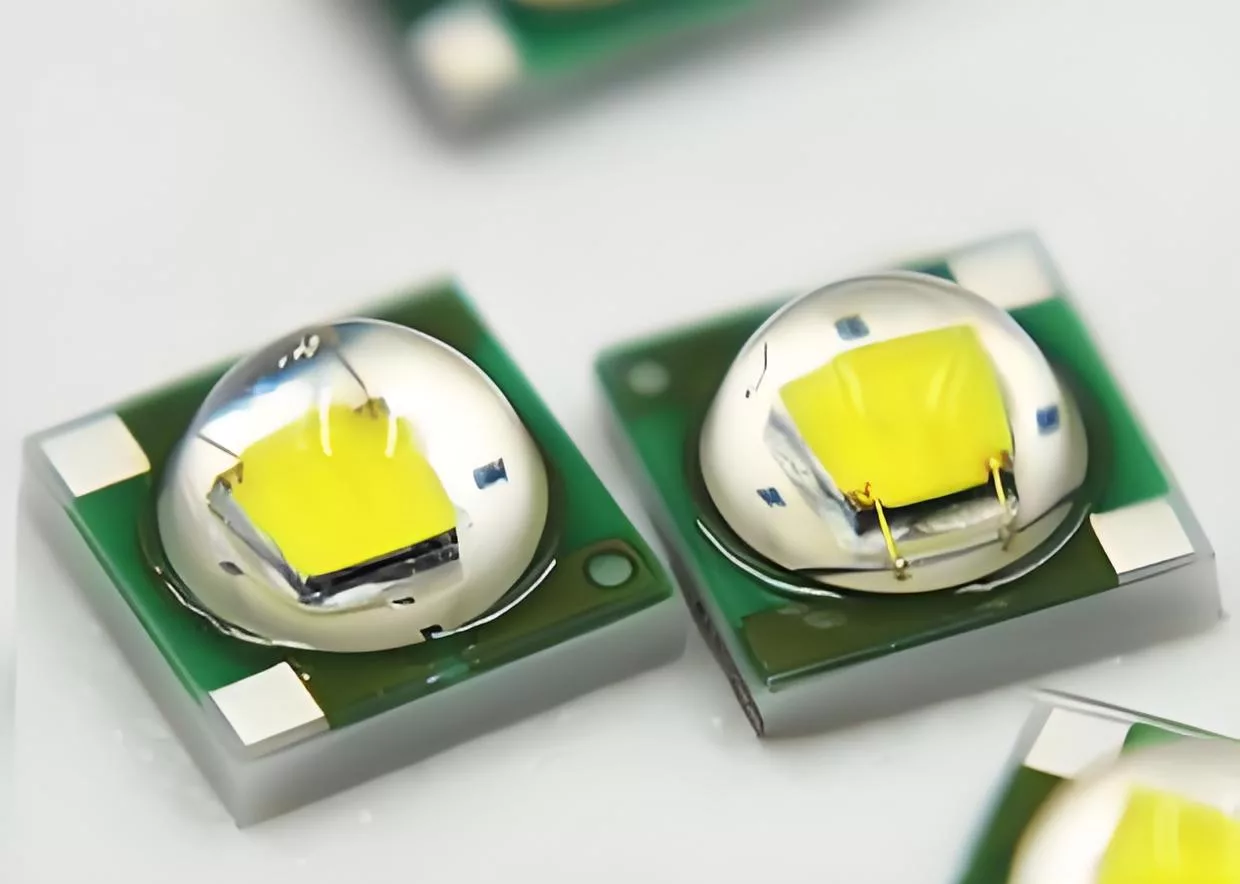
Principle of LED
An LED consists of a PN junction, which is a combination of a P-type semiconductor (with an excess of holes) and an N-type semiconductor (with an excess of electrons). When current flows from the P-type layer to the N-type layer, electrons and holes combine near the PN junction, releasing energy. This energy is emitted in the form of photons, producing light.
Main LED Packaging Materials
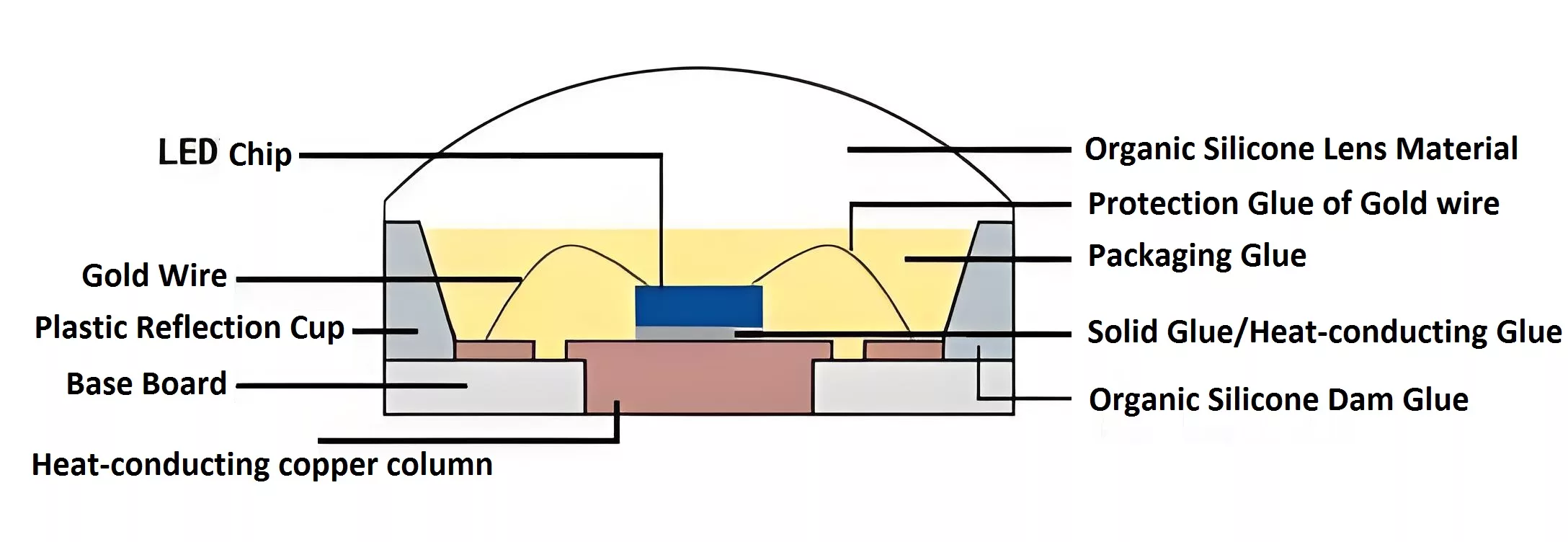
Main LED Packaging Materials Include: Chips, Wires, and Mounts.
- Chips: Available in square and round shapes; red, green, and blue colors, with sizes ranging from 8mil to 45*45mil.
- Wires: Gold, silver, alloy, aluminum, and copper wires.
- Mounts: PPA, PCT, EMC ceramics. EMC mounts have advantages such as high heat resistance, non-yellowing, high current, high power, high density, UV resistance, and small size.
Development History of LED
Since Thomas Edison invented the light bulb in 1879, humanity has entered the era of electric lighting. Today’s lighting solutions have evolved to be primarily LED-based. Before replacing traditional lighting technologies, the development of LED technology has gone through a century of evolution, with the following milestones:
- Early Discovery: In 1907, British engineer H.J. Round discovered the phenomenon of electroluminescence, which was an early concept of LED technology.
- First LED: In 1927, Russian inventor Oleg Losev created the world’s first LED light bulb, but it did not find practical application at the time due to cost and technological limitations.
- Technical Breakthrough: In 1955, physicists at the American Radio Corporation discovered the infrared radiation of gallium arsenide and other semiconductor alloys, laying the foundation for the later development of LEDs.
- Visible Light LED: In 1962, Nick Holonyak Jr. of General Electric successfully created the first visible light-emitting red LED, marking the transition of LED technology towards lighting tools.
- Commercialization and Color Development: By the late 1970s, LEDs of various colors, including red, orange, yellow, green, and cyan, had been developed. However, it was not until 1993 that Shuji Nakamura, a Japanese scientist, invented the blue LED, which was key to bringing LED lighting technology into homes and commercial lighting.
- White Light LED: In 1998, white light was produced by coating blue LED chips with YAG yellow phosphor, marking the official entry of LEDs into the lighting era.
- Nobel Prize: Shuji Nakamura was awarded the Nobel Prize in Physics in 2014 for his contributions to the invention of blue LEDs, recognizing his efforts to create energy-efficient and bright white light sources.
- Popularization in the 21st Century: After entering the 21st century, the cost of LED bulbs has dropped significantly, while maintaining their energy-saving, safe, and high-brightness characteristics, beginning to fully replace traditional lighting technologies.
- Intelligence and Diversity: The ease of controlling LEDs, their small size, and the ability to produce a variety of colors make lighting solutions more intelligent and personalized. Users can control the brightness and color of lighting through wireless devices, making LED lighting technology more diverse.
Features of LED
- High Efficiency: LEDs are more energy-efficient than traditional incandescent and fluorescent lights because they convert more electrical energy into light energy rather than heat.
- Long Lifespan: The lifespan of LEDs far exceeds that of traditional light sources, generally reaching over 50,000 hours.
- Fast Response: The illumination and extinguishing of LEDs can be almost instantaneous, making them very suitable for applications that require rapid switching, such as automotive brake lights.
- Durability: LEDs do not have filaments or gas filling, making them more shock-resistant and durable.
- Compact Size: The small size of LEDs makes them easy to integrate into compact spaces, suitable for the design of modern electronic devices.
- Environmentally Friendly: LEDs do not contain harmful substances such as mercury, and their long lifespan reduces the generation of waste.
- Dimmable: Many LEDs can be easily dimmed, providing more flexible lighting solutions.
- Color Diversity: LEDs can emit various colors of light, including red, green, and blue. By combining different colors of LEDs or using special phosphors, a variety of colors, including white light, can be produced.
Basic Specifications of LED Chips:
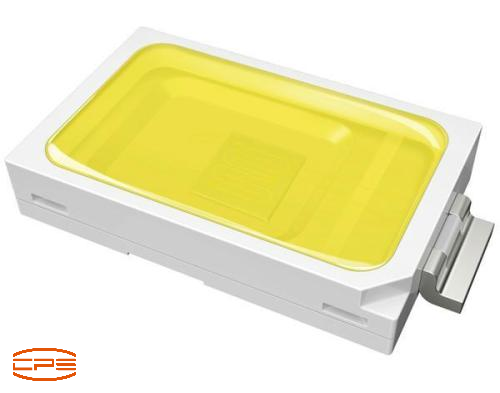
Size of LED chip
- 0603: Converted to the metric system is 1608, indicating that the length of the LED component is 1.6mm, and the width is 0.8mm. It is commonly referred to as 1608 in the industry and 0603 in English.
- 0805: Converted to the metric system is 2012, indicating that the length of the LED component is 2.0mm, and the width is 1.2mm. It is commonly referred to as 2012 in the industry and 0805 in English.
- 1210: Converted to the metric system is 3528, indicating that the length of the LED component is 3.5mm, and the width is 2.8mm. It is commonly referred to as 3528 in the industry and 1210 in English.
- 3014: This is the metric designation, indicating that the length of the LED component is 3.0mm, and the width is 1.4mm.
- 3030: This is the metric designation, indicating that the length of the LED component is 3.0mm, and the width is 3.0mm.
- 3528: This is the metric designation, indicating that the length of the LED component is 3.5mm, and the width is 2.8mm. It is commonly referred to as 3528 in the industry (3.551.9).
- 2835: This is the metric designation, indicating that the length of the LED component is 3.5mm, and the width is 2.8mm. It is commonly referred to as 2835 in the industry (3.550.8).
- 5050: This is the metric designation, indicating that the length of the LED component is 5.0mm, and the width is 5.0mm. It is commonly referred to as 5050.
Angle of LED chip
Angle Specifications The light-emitting angle of LED light sources is between 90-160 degrees; there are differences among manufacturers, usually between 115-125 degrees. The angle affects the light-emitting angle and illumination of the finished lamps.
LED Color Temperature (LCT) of LED
Different color temperatures can evoke different emotional responses in people. Warm white 2700K-3300K is stable and warm; Natural white 4000K-5000K is refreshing, natural, and comfortable; Daylight white 5500K-6500K is serious and cool; Cool white above 7000K is cold and elegant, suitable for jewelry. Light sources are generally categorized into three types based on color temperature:
-
Warm white 2700K-3300K
Warm light has a color temperature below 3300K. It is similar to the color of incandescent light, with more red light, giving a warm, healthy, and comfortable feeling. It is suitable for homes, residences, hospitals, hotels, and places with lower temperatures.
-
Natural white 4000K-5000K
Its color temperature ranges from 4000K to 5000K. Warm white light is soft and gives a pleasant, comfortable, and peaceful feeling. It is suitable for stores, hospitals, offices, restaurants, waiting rooms, and other places.
-
Daylight white(Cool Light) 5500K-6500K
Cool Light Also known as daylight, its color temperature is above 5300K. The light source is close to natural light, giving a bright feeling and helping people concentrate. It is suitable for offices, meeting rooms, classrooms, drafting rooms, design studios, library reading rooms, exhibition windows, and other places.
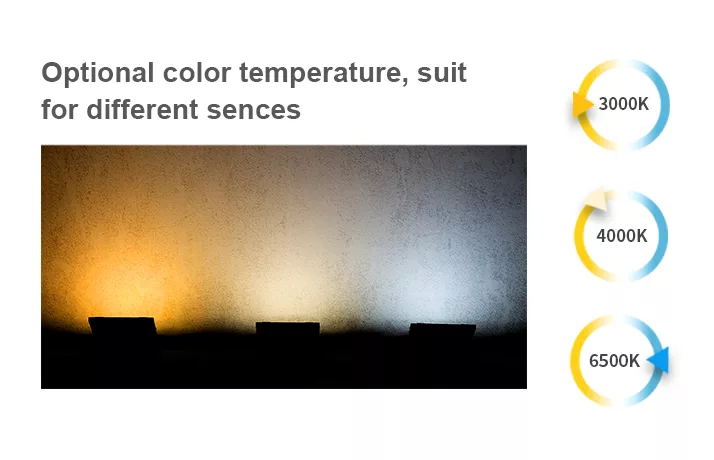
Color Rendering Index (CRI) of LED
The ability of a light source to reveal the colors of objects is called color rendering, which is compared to the appearance of object colors under the same color temperature reference or standard light sources (incandescent lamps or daylight). The Color Rendering Index (CRI) of a light source that is high can illuminate objects to show more realistic colors. Currently, the CRI is a common method for defining and evaluating the color rendering properties of light sources.
Applicable Ranges for Different Color Rendering Indices (CRI):
- Ra ≥95 Suitable for museums, art galleries, and printing industries and venues.
- Ra ≥90 or 80 Suitable for homes, restaurants, high-end textile crafts, and similar industries.
- Ra ≥70 Suitable for offices, schools, outdoor street lighting.
- Others, Suitable for heavy industrial factories, outdoor street lighting, outdoor road lighting, and some places with lower requirements.
Heat dissipation is a crucial factor for design of LED lights
Enhancing the heat dissipation performance of LED lights is essential to achieve the full benefits of LED technology, including energy efficiency, long life, and high performance, while also ensuring safety and environmental sustainability. Improving the performance of heat dissipation for an LED light is crucial for several reasons:
- Efficiency: LEDs are designed to convert electricity into light, but a significant portion of the energy is also converted into heat. Effective heat dissipation ensures that the LED operates at its optimal temperature, maintaining its efficiency and light output.
- Longevity: The life of an LED is directly related to its operating temperature. Higher temperatures accelerate the degradation of the semiconductor material, leading to a shorter lifespan. Efficient cooling extends the life of the LED by reducing the thermal stress.
- Brightness and Color Quality: Overheating can reduce the brightness of an LED and alter its color output. Proper heat management ensures that the LED maintains its intended light intensity and color temperature, providing consistent illumination.
- Reliability: Operating at high temperatures can cause LEDs to fail prematurely. By improving heat dissipation, the likelihood of failures due to overheating is reduced, leading to more reliable lighting solutions.
- Safety: Poor heat dissipation can lead to hot spots that may pose a safety risk, especially in enclosed fixtures or areas with flammable materials. Adequate cooling prevents excessive temperature rises and potential hazards.
- Energy Savings: LEDs are energy-efficient, but their energy savings are maximized when they are not working harder than necessary due to heat. Efficient heat dissipation allows the LEDs to operate at lower power levels, reducing overall energy consumption.
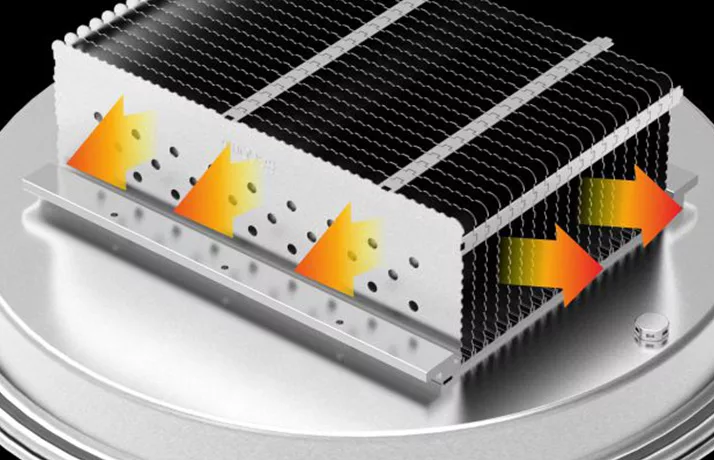
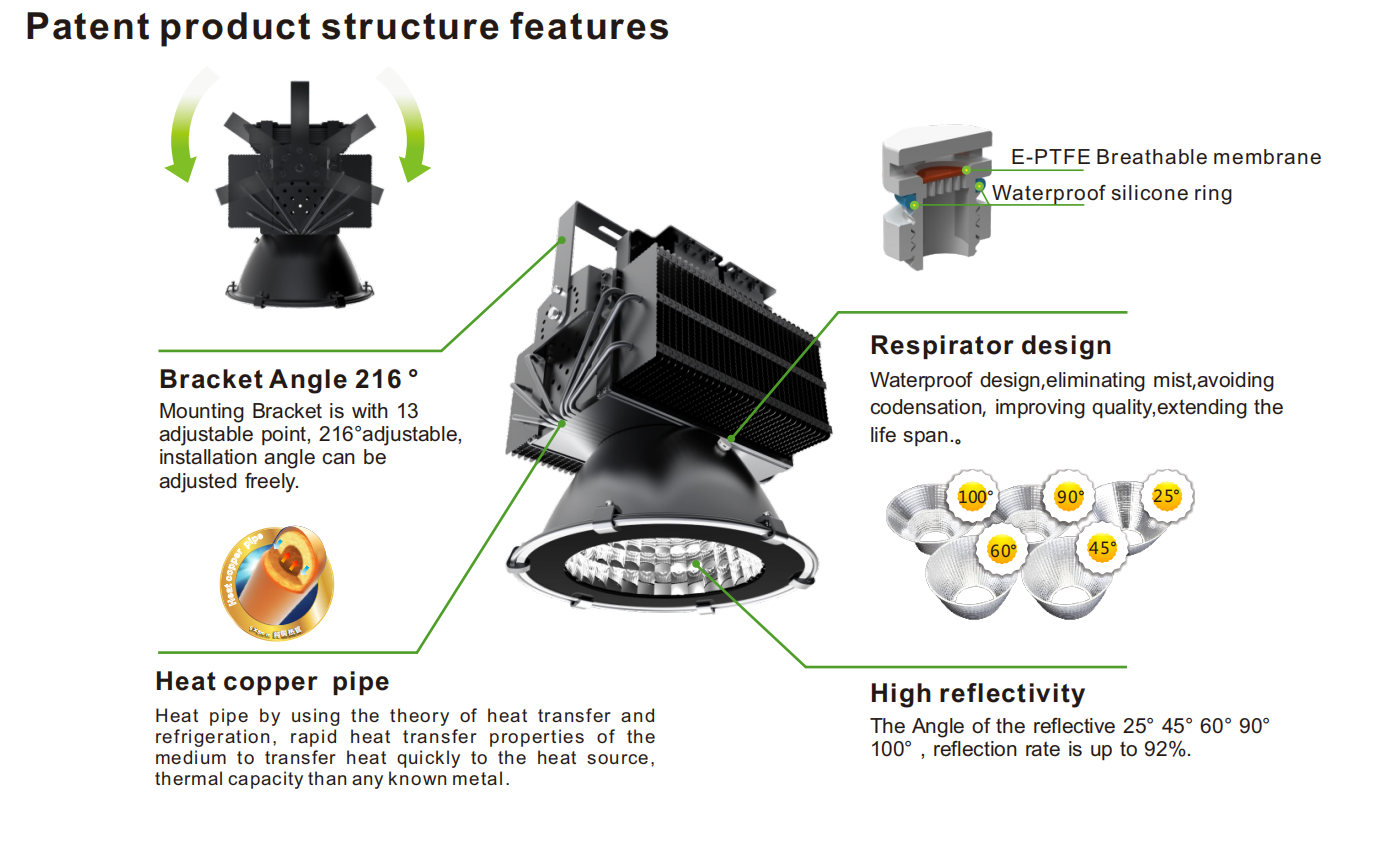
Above H series LED fixture is a long-last products made by PCcooler, our engineers are good at design of heat-dissipation for LED.
Application field of LED
- General lighting: home, office, shopping malls, streets and other lighting.
- Lights: traffic lights, car taillights, etc.
- Display: LED display is widely used in billboards, information display, etc.
- Decorative lighting: festival decoration, landscape lighting, stage lighting, etc.
- Special lighting: plant growth lights, medical lighting, mining lighting, etc.
Future trend of LED
LEDs are likely to become an increasingly integral part of our lives, providing not just illumination but also contributing to energy efficiency, smart technology ecosystems, and health-focused applications. The future trends of LED technology are poised for continued growth and innovation, with several key areas of development expected to shape the industry:
- Increased Efficiency: Ongoing research aims to make LEDs even more energy-efficient, with a focus on improving the light output per watt and reducing energy consumption.
- Smart Lighting: The integration of LEDs with sensors, IoT (Internet of Things) devices, and smart control systems is expected to grow, enabling context-aware and personalized lighting solutions that can adapt to human presence, activity, and ambient conditions.
- Health and Well-being: LEDs are being designed to support human health and well-being, with applications ranging from biologically effective lighting that can help regulate circadian rhythms to UV LEDs for sterilization and air purification.
- Agriculture: LED grow lights are becoming more prevalent in controlled-environment agriculture, offering energy savings and the ability to tune light spectra for optimal plant growth.
- Cost Reduction: Continued advancements in manufacturing techniques are expected to lower the cost of LEDs, making them more accessible and affordable for a wider range of applications.
- Innovation in Materials: Research into new materials, such as quantum dots and nanomaterials, may lead to LEDs with improved performance and new capabilities.








